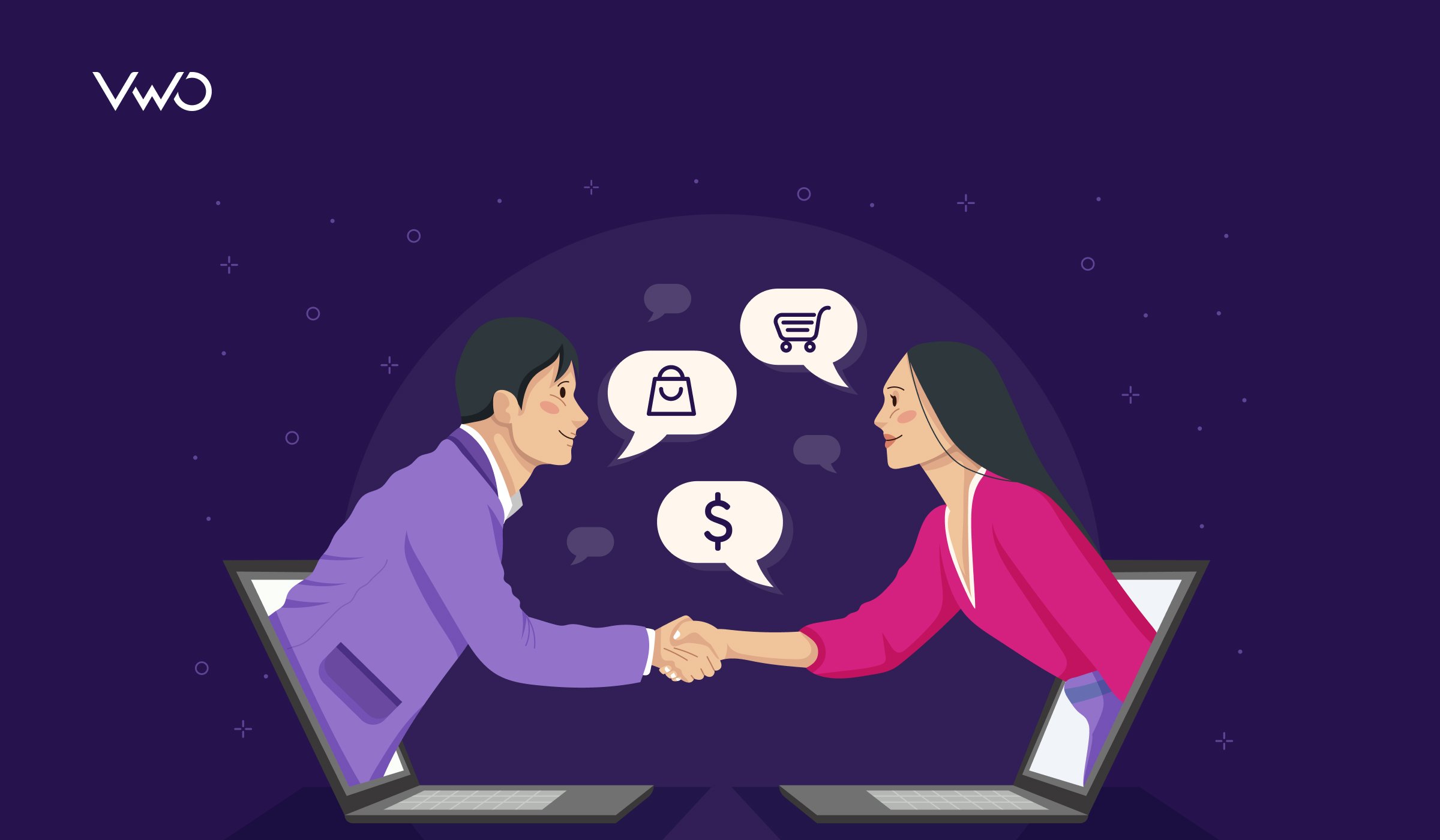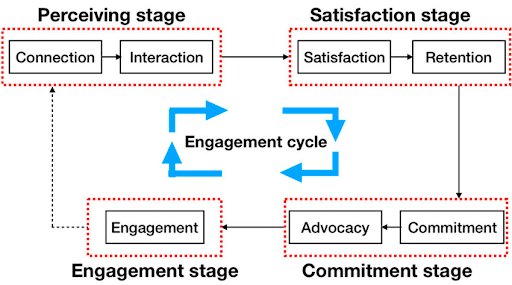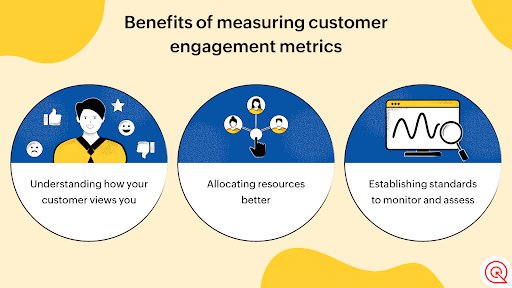- Customer Engagement Guide
- Customer Engagement Importance
- Customer Engagement Metrics
- Customer Engagment Strategies
- Ideas to Boost Customer Engagement
- B2B Customer Engagement
- Customer Engagement Tools
- Customer Engagment Vs. Customer Experience
- Customer Engagement Examples
- Digital Customer Engagement
- Improve Customer Engagement in Retail
- Customer Engagement Statistics
The Power of Customer Engagement Platforms: Top 10 Tools to Try
In today’s rapidly evolving digital landscape, where brands and businesses compete for the attention of their target audience, customer engagement has emerged as a critical factor for success. A vital part of it is about exceeding customer expectations and this cannot be achieved simply by acquiring customers; it’s about building meaningful customer relationships that foster loyalty and advocacy. This is where customer data along with customer engagement platforms and tools come into play. In this blog, we will delve into the world of customer engagement platforms, understand their significance, and explore five top-notch tools you should consider integrating into your own engagement strategy.

What are customer engagement platforms?
A customer engagement solution consists of a suite of tools and technologies designed to facilitate interactions between businesses and their customers across various touchpoints. These platforms streamline and enhance the customer journey by providing personalized, relevant, and consistent experiences. Whether it’s through social media, email, in-app messaging, or other channels, these customer communications platforms enable businesses to connect with their audience in a meaningful way and increase customer engagement.
These platforms offer a range of functionalities, including:
- Personalized communication: Effective customer engagement tools empower businesses to tailor their interactions based on user preferences, behavior, and demographics.
- Multichannel reach: Whether it’s through social media, email, web chat, or SMS, customer engagement software enables brands to connect with customers through their preferred channels.
- Data-driven insights: These tools provide valuable analytics that help companies understand customer behavior, preferences, and engagement patterns.
- Automated campaigns: Automation features allow businesses to schedule and deploy targeted campaigns, saving time and ensuring timely interactions.
Importance of customer engagement platforms
Why is customer engagement software essential in today’s business landscape? Let’s explore a few key reasons:
- Enhanced customer experience: Customer engagement software enables businesses to deliver personalized experiences, enhancing customer satisfaction and loyalty.
- Data-driven decisions: By collecting and analyzing customer data, these platforms empower companies to make informed decisions and create more effective marketing strategies.
- Brand loyalty: Regular interactions foster a sense of loyalty among customers, making them more likely to stick with your brand in the long run.
- Increased conversions: Personalized and relevant interactions can lead to higher conversion rates as customers feel understood and valued.
- Improved customer feedback: These platforms facilitate the collection of feedback, enabling businesses to address concerns and continuously improve their offerings.
What are the 5 stages of customer engagement? How do customer engagement tools help in each of them?

To improve customer satisfaction, you need a process. This process involves several stages, each representing a different level of interaction and relationship-building between a brand and its customers. Customer engagement tools play a crucial role in facilitating and enhancing these stages. Here are the five stages of customer engagement and how customer engagement tools help in each of them:
1. Awareness
This is the initial stage of customer conversations where potential customers become aware of your brand’s existence. Customer engagement tools contribute to awareness by:
- Social media management: Tools like Hootsuite or Buffer help schedule and manage social media posts across multiple platforms, increasing brand visibility.
- Content creation: Tools like Canva or Adobe Spark assist in creating visually appealing content that grabs attention and communicates your brand’s message effectively.
2. Interest
At this stage, customers show an interest in your brand and begin exploring your products or services. Customer engagement tools help by:
- Email marketing: Tools like Mailchimp or Sendinblue allow you to send targeted emails to your leads, providing them with valuable information and updates.
- Web analytics: Tools like Google Analytics help you track user behavior on your website, providing insights into what interests them the most.
3. Consideration
During the consideration stage, customers evaluate whether your offerings meet their needs. Customer engagement tools assist by:
- Live chat: Tools like Intercom or LiveChat enable real-time conversations with potential customers, addressing their questions and concerns.
- Personalization: CRM platforms like HubSpot or Salesforce offer personalized content recommendations based on customer preferences and behavior.
4. Purchase
This is when customers make a purchase or decide to avail of your services. Customer engagement tools support customer success at this stage by:
- eCommerce solutions: Tools like Shopify or WooCommerce provide a seamless purchasing experience, from cart management to secure transactions.
- Retargeting: Tools like AdRoll or Facebook Pixel help you show targeted ads to customers who have shown interest but haven’t completed a purchase.
5. Retention and advocacy
After the purchase, the goal is to retain loyal customers and turn them into advocates for your brand. Customer engagement tools contribute by:
- Customer support platforms: Tools like Zendesk or Freshdesk enable efficient handling of customer inquiries and complaints, enhancing post-purchase experience.
- Surveys and feedback: Tools like SurveyMonkey or Typeform help gather feedback, allowing you to make improvements based on customer suggestions.
- Loyalty programs: Tools like Smile.io or LoyaltyLion help you set up and manage loyalty programs to reward and retain existing customers and boost customer loyalty.
- Social media listening: Tools like Mention or Brandwatch monitor social media for mentions of your brand, allowing you to engage with customers and address their feedback.
In each stage, customer engagement tools play a role in nurturing the relationship between the brand and the customer. They enable personalized interactions, streamline communication, gather valuable insights, and enhance the overall customer experience. By leveraging these tools strategically at each stage, businesses can effectively guide customers through the engagement process, ultimately leading to increased customer loyalty, advocacy, and business growth.
Top 10 customer engagement tools to try
Here are 10 customer engagement tools that deserve a spot in your arsenal:
- VWO: VWO offers A/B testing and personalization capabilities, allowing you to optimize website experiences for different customer segments.
- Amazon AWS (Amazon Web Services): AWS provides a scalable and reliable cloud infrastructure that can power your customer engagement applications and services.
- Netcore: Netcore offers a comprehensive customer engagement suite, including email marketing, AI-driven personalization, and multi-channel communication.
- Moengage: Moengage specializes in mobile engagement, providing personalized messaging, push notifications, and in-app messaging to engage users.
- Twilio: Twilio’s communication APIs enable businesses to integrate messaging, voice, and video capabilities into their customer engagement strategies.
- Zendesk: Zendesk offers customer support solutions that enhance engagement through ticketing systems, live chat, and self-service portals.
- Intercom: Intercom focuses on real-time customer communication, offering solutions for chat, email, and customer feedback management.
- HubSpot: HubSpot provides a holistic platform for inbound marketing, sales, and customer service, facilitating seamless engagement across the customer journey.
- Salesforce Service Cloud: Salesforce’s Service Cloud offers tools for customer support, case management, and omnichannel engagement.
- Freshdesk: Freshdesk is a user-friendly helpdesk software that streamlines customer support, enabling efficient issue resolution and engagement.
Measuring customer engagement using a customer engagement platform

To ensure the effectiveness of your customer engagement strategies, it’s essential to measure and analyze their impact. Here are some key metrics to consider:
- Click-through rates (CTR): Measure the percentage of recipients who clicked on a link within your communication.
- Conversion rates: Track the percentage of engaged customers who completed a desired action, such as making a purchase.
- Customer feedback: Gather qualitative insights through surveys and feedback forms to understand customer sentiment.
- Time spent on site/app: Monitor the duration customers spend interacting with your website or app.
- Social media engagement: Analyze likes, shares, comments, and overall engagement on social media platforms.
By regularly monitoring these metrics, you can refine your strategies, gauge customer satisfaction, and optimize your customer engagement efforts for better results.
The synergy of customer engagement software and marketing
Customer engagement and marketing are inseparable partners in today’s business landscape. Marketing efforts are driven by customer engagement, and effective marketing strategies contribute to enhanced customer engagement solutions well. This symbiotic relationship creates a cycle of value creation, where engaged customers become brand advocates, further driving business growth.
Final thoughts
In the digital age, customer engagement is more critical than ever before. It’s not just about selling a product; it’s about building lasting relationships and providing memorable experiences. Customer engagement software offers the tools you need to connect with your audience, understand their needs, and tailor your interactions accordingly. By exploring options like VWO, Amazon AWS, Netcore, Moengage, and Twilio, you can take your customer engagement strategies to new heights, fostering brand loyalty and driving business success. Remember, the key lies in personalized interactions and meaningful connections.
Frequently Asked Questions (FAQs)
A customer engagement platform is a set of tools and technologies designed to facilitate meaningful interactions between businesses and their customers across various channels, enhancing customer experiences and fostering loyalty.
Customer engagement software is crucial because it enables businesses to deliver personalized experiences, build brand loyalty, gather insights from customer interactions, and improve overall customer satisfaction.
Using a customer engagement platform can lead to enhanced customer experiences, improved brand loyalty, increased conversions, data-driven decision-making, targeted and automated campaigns, and effective customer feedback collection.
Look for features like personalized communication tools, multichannel reach capabilities, data-driven insights, automated campaign management, and integration with other business systems.
Consider your business needs, the scalability of the customer engagement platform work done, ease of use, integration capabilities, available channels, analytics capabilities, and user reviews when choosing a customer engagement platform.
You can use a customer engagement platform to deliver personalized content, engage customers through their preferred channels, analyze customer behavior, take customer surveys, gather feedback, and automate targeted interactions.
Best practices include segmenting your audience, sending relevant content, analyzing data to refine strategies, responding promptly to customer inquiries, and continuously adapting based on customer feedback.
Future trends may include AI-powered personalization and personalized messages, deeper integration of communication channels, more advanced analytics, increased focus on privacy and data security, and seamless omnichannel experiences.
A customer engagement platform is essential for businesses to connect with customers on a deeper level, understand their needs, tailor interactions, and ultimately create lasting relationships that drive loyalty and growth.
While both CRM (Customer Relationship Management) and customer engagement platforms focus on managing customer interactions, a CRM typically focuses on sales and managing customer data, while a customer engagement platform emphasizes fostering interactions, delivering personalized experiences, and building loyalty across various touchpoints.











